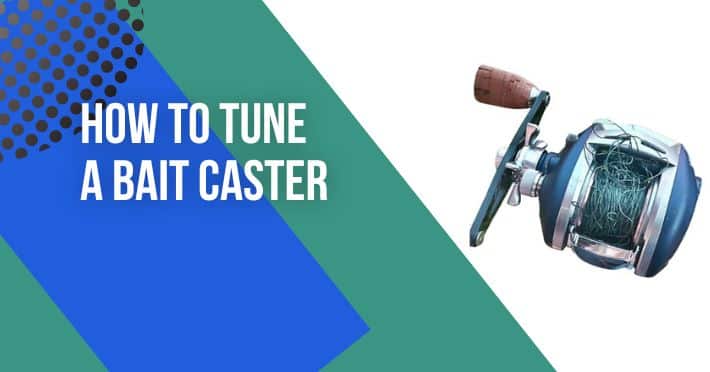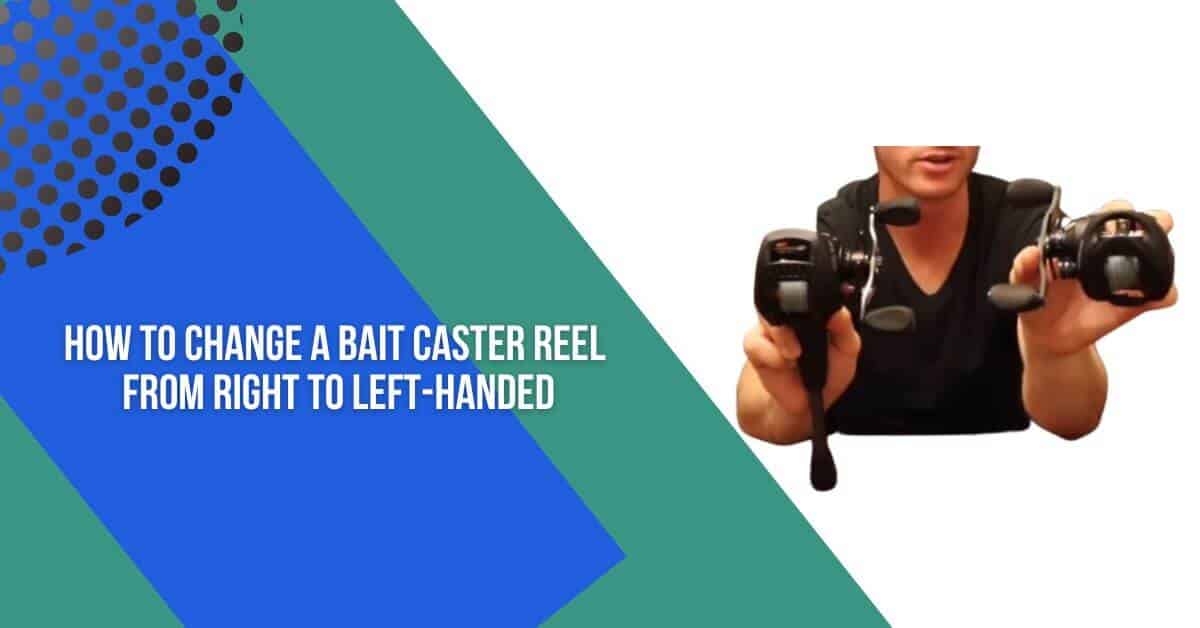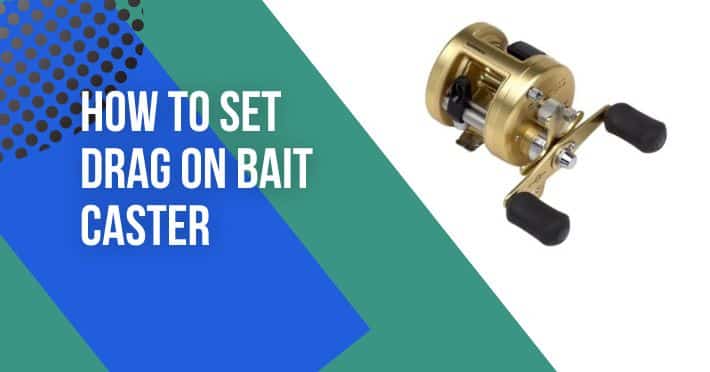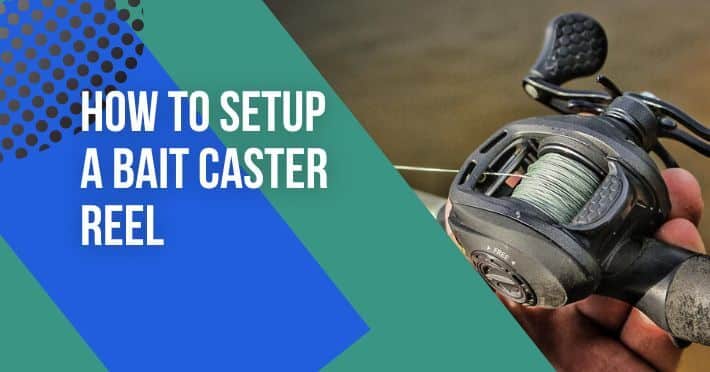Contents
- 1 Definition of Baitcasting Reel Gear Ratio
- 2 Importance of Gear Ratio for Fishing
- 3 All About Fishing Reel Gear Ratios:
- 4 Overview of Different Gear Ratios Available
- 5 Baitcasting Reel Gear Ratio Guide – Let’s Understand
- 6 How Gear Ratio Affects Fishing Performance:
- 7 The Relationship Between Gear Ratio and Reel Speed:
- 8 Factors to Consider When Choosing a Gear Ratio:
- 9 Types of Gear Ratios:
- 10 Low Gear Ratio:
- 11 Medium Gear Ratio:
- 12 High Gear Ratio:
- 13 Ultra-High Gear Ratio:
- 14 Pros and Cons of Each Gear Ratio Type
- 15 1) Low Gear Ratio
- 16 2) Medium Gear Ratio:
- 17 3) High Gear Ratio:
- 18 4) Ultra-High Gear Ratio:
- 19 Choosing the Right Gear Ratio for Your Needs
- 20 1) Fishing Technique:
- 21 2) Lure Size and Weight:
- 22 3) Fish Species:
- 23 Recommended Gear Ratios for Different Types of Fishing:
- 24 1) Topwater Fishing:
- 25 2) Jig Fishing:
- 26 3) Deep Water Fishing:
- 27 4) Flipping and Pitching:
- 28 Conclusion
- 29 Frequently Asked Questions
- 30 What is the gear ratio on a baitcasting reel?
- 31 What gear ratio should I use for topwater fishing?
- 32 What gear ratio should I use for flipping and pitching?
- 33 Does the size of the bait affect the gear ratio I should choose?
- 34 What gear ratio should I use for deep-water fishing?
When it comes to fishing with a baitcasting reel, understanding the gear ratio is crucial. In this guide, Baitcasting Reel Gear Ratio Guide , discuss its importance for fishing, and provide an overview of the different gear ratios that are available.
Definition of Baitcasting Reel Gear Ratio
The gear ratio of a baitcasting reel refers to the relationship between the number of times the spool turns per each complete turn of the handle. It is usually represented as a ratio, such as 6.4:1, which means that the spool turns 6.4 times for each complete turn of the handle.
Importance of Gear Ratio for Fishing
Gear ratio plays a significant role in fishing, as it determines how quickly you can retrieve your bait or lure. A higher gear ratio means a faster retrieve, which is ideal for techniques that require a lot of movement, such as topwater fishing or fast-moving lures. On the other hand, a lower gear ratio is better suited for techniques that require a slower, more controlled retrieve, such as deep diving crankbaits or heavy jigs.
All About Fishing Reel Gear Ratios:
Overview of Different Gear Ratios Available
Baitcasting reels come with a variety of gear ratios, ranging from low to high. Some of the common gear ratios include 5.4:1, 6.4:1, 7.1:1, and 8.1:1. It is important to choose the right gear ratio based on the type of fishing you plan to do, as well as your personal preference and comfort level.
Baitcasting Reel Gear Ratio Guide – Let’s Understand
To choose the right gear ratio for your baitcasting reel, it’s important to understand how gear ratios affect fishing performance. Here are some key points to keep in mind:
How Gear Ratio Affects Fishing Performance:
The gear ratio of your baitcasting reel has a direct impact on your fishing performance. A higher gear ratio means a faster retrieve, which is ideal for techniques that require a lot of movement, such as topwater fishing or fast-moving lures. A lower gear ratio, on the other hand, is better suited for techniques that require a slower, more controlled retrieve, such as deep diving crankbaits or heavy jigs.
The Relationship Between Gear Ratio and Reel Speed:
The gear ratio of a baitcasting reel determines how quickly the spool turns for each complete turn of the handle. A gear ratio of 6.4:1 means that the spool turns 6.4 times for each complete turn of the handle, resulting in a faster retrieve speed compared to a gear ratio of 5.4:1.
Factors to Consider When Choosing a Gear Ratio:
When selecting a gear ratio for your baitcasting reel, there are several factors to consider, such as the type of fishing you plan to do, the size of the bait or lure you’ll be using, and your personal preference and comfort level. For example, if you plan to fish with heavy lures or in deep water, a lower gear ratio may be more suitable. However, if you prefer a faster retrieve for techniques such as topwater fishing, a higher gear ratio may be more appropriate. It’s important to choose a gear ratio that suits your fishing needs and allows you to fish comfortably for extended periods.
Types of Gear Ratios:
Baitcasting reels come with different types of gear ratios that cater to different fishing needs. Here are the four common types of gear ratios you can find:
Low Gear Ratio:
A low gear ratio ranges from 4.1:1 to 5.4:1 and is suitable for techniques that require more power and torque, such as deep water fishing, heavy cover fishing, and slow-rolling baits. It allows for a slow and steady retrieve, making it easier to control heavy lures or baits.
Medium Gear Ratio:
A medium gear ratio ranges from 6.1:1 to 6.4:1 and is versatile enough to handle a wide range of fishing techniques. It is suitable for fishing with a variety of lures, including topwater lures, jigs, and spinnerbaits.
High Gear Ratio:
A high gear ratio ranges from 7.1:1 to 8.1:1 and is ideal for techniques that require a fast retrieve, such as topwater fishing, buzz baits, and swimbaits. It allows for quick line retrieval, making it easier to keep up with fast-moving fish.
Ultra-High Gear Ratio:
An ultra-high gear ratio ranges from 8.1:1 to 9.1:1 and is the fastest gear ratio available. It is ideal for techniques that require an extremely fast retrieve, such as burning lures across the surface or flipping and pitching in heavy cover. However, it can be more difficult to control and may cause fatigue if used for extended periods.
When selecting a gear ratio, it’s important to consider the specific fishing techniques you plan to use and match the gear ratio to those techniques. This will ensure that you have the right equipment to handle different fishing scenarios and maximize your chances of success.
Pros and Cons of Each Gear Ratio Type
Each type of gear ratio has its own set of advantages and disadvantages. Here’s a breakdown of the pros and cons for each gear ratio type:
1) Low Gear Ratio
Advantages:
- Provides more power and torque for techniques that require it.
- Allows for a slow and steady retrieve, making it easier to control heavy lures or baits.
- Ideal for fishing in deep water or heavy cover.
Disadvantages:
- Not suitable for techniques that require a fast retrieve, such as topwater fishing or swimbaits.
- Can cause fatigue if used for extended periods of time.
2) Medium Gear Ratio:
Advantages:
- Versatile enough to handle a wide range of fishing techniques.
- Suitable for fishing with a variety of lures, including topwater lures, jigs, and spinnerbaits.
- Offers a good balance between power and speed.
Disadvantages:
May not be ideal for techniques that require an extremely fast retrieve or high power and torque.
3) High Gear Ratio:
Advantages:
- Ideal for techniques that require a fast retrieve, such as topwater fishing, buzzbaits, and swimbaits.
- Allows for quick line retrieval, making it easier to keep up with fast-moving fish.
- Offers a high level of control and precision.
Disadvantages:
- Can be difficult to control if used for extended periods of time.
- May not be suitable for fishing in heavy cover or deep water.
4) Ultra-High Gear Ratio:
Advantages:
- The fastest gear ratio available, is ideal for techniques that require an extremely fast retrieve, such as burning lures across the surface or flipping and pitching in heavy cover.
- Allows for quick line retrieval, making it easier to keep up with fast-moving fish.
- Offers a high level of control and precision.
Disadvantages:
- Can cause fatigue if used for extended periods of time.
- Not suitable for techniques that require a slow and steady retrieve or more power and torque.
- May not be ideal for fishing in heavy cover or deep water.
When choosing a gear ratio for your baitcasting reel, it’s important to consider the advantages and disadvantages of each gear ratio type and match the gear ratio to the specific fishing techniques you plan to use. This will ensure that you have the right equipment for the job and maximize your chances of success on the water.
Choosing the Right Gear Ratio for Your Needs
When selecting a gear ratio for your baitcasting reel, there are several factors to consider, including:
1) Fishing Technique:
Consider the specific fishing technique you plan to use and match the gear ratio to that technique. For example, if you’re planning on fishing topwater lures or buzz baits, a high gear ratio may be more suitable. If you’re fishing deep water or heavy cover, a low gear ratio may be a better choice.
2) Lure Size and Weight:
The size and weight of the lure you plan to use can also influence your gear ratio selection. Heavier lures may require a lower gear ratio to provide the necessary power and torque, while lighter lures may be better suited to a higher gear ratio for a faster retrieve.
3) Fish Species:
Consider the size and behaviour of the fish species you plan to target. If you’re targeting fast-moving species like bass or pike, a high gear ratio may be more suitable to keep up with their speed. If you’re targeting larger, more powerful species like musky or tarpon, a lower gear ratio may be necessary to provide the necessary power and torque.
Recommended Gear Ratios for Different Types of Fishing:
Here are some general gear ratio recommendations for different types of fishing:
1) Topwater Fishing:
Recommended Gear Ratio: High (7.1:1 or higher)
Reason: A high gear ratio allows for a faster retrieve and better control of the lure.
2) Jig Fishing:
Recommended Gear Ratio: Medium to High (6.1:1 to 7.1:1)
Reason: A medium to-high gear ratio provides a good balance between power and speed for jig fishing.
3) Deep Water Fishing:
Recommended Gear Ratio: Low (4.1:1 to 5.4:1)
Reason: A low gear ratio provides the necessary power and torque for deep-water fishing.
4) Flipping and Pitching:
Recommended Gear Ratio: Ultra-High (8.1:1 or higher)
Reason: An ultra-high gear ratio allows for a fast retrieve and better control of the lure when flipping and pitching in heavy cover.
Keep in mind that these are general recommendations, and the gear ratio you choose ultimately depends on your personal preference and the specific fishing situation you’re facing.
Conclusion
The gear ratio of a baitcasting reel is an important factor to consider when choosing the right reel for your needs. Understanding how gear ratios work and their impact on fishing performance can help you make an informed decision when selecting a reel. Whether you’re targeting fast-moving bass or slow-moving musky, there’s a gear ratio out there that can help you get the job done.
Frequently Asked Questions
What is the gear ratio on a baitcasting reel?
A gear ratio refers to the number of times the spool rotates per turn of the handle. A higher gear ratio means a faster retrieve, while a lower gear ratio means more power and torque.
What gear ratio should I use for topwater fishing?
For topwater fishing, a high gear ratio of 7.1:1 or higher is recommended.
What gear ratio should I use for flipping and pitching?
For flipping and pitching in heavy cover, an ultra-high gear ratio of 8.1:1 or higher is recommended.
Does the size of the bait affect the gear ratio I should choose?
Yes, the size and weight of the bait can influence the gear ratio selection. Heavier lures may require a lower gear ratio for more power and torque, while lighter lures may be better suited to a higher gear ratio for a faster retrieve.
What gear ratio should I use for deep-water fishing?
For deep-water fishing, a low gear ratio of 4.1:1 to 5.4:1 is recommended to provide the necessary power and torque.








